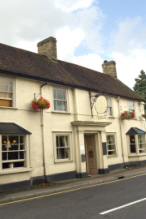The Upper Tribunal on pubs and ACVs
- Details
 The Upper Tribunal has, finally, provided some guidance on assets of community value, writes Jeremy Phillips QC.
The Upper Tribunal has, finally, provided some guidance on assets of community value, writes Jeremy Phillips QC.
A recent decision [1] of the Upper Tribunal (Administrative Appeals Chamber) in Admiral Taverns Limited v Cheshire West and Chester Council and Farndon Parish Council [2018] UKUT 15 (AAC) has finally shed some light on the proper way to approach ACV [2] applications for public houses [3], by far the most numerous [4] category of applications to date.
The Localism Act 2011 requires every local authority to maintain a list of land (usually buildings [5]) in its area which is of ‘community value’ [6]. Nominations may be made by Parish Councils and local community groups, but not individuals. The local authority has 8 weeks to consider the initial nomination. A prospect of use or reuse by the community does not itself need to be demonstrated by a proposal to take the asset over [7], although a building or land which has never been so used by the community will not be eligible to be listed.
The effect of such a listing, if unchallenged by the owner under s 92 [8], is to require the owner to notify the council of any intention to sell. Any community interest group [9] giving notice [10] within the next 6 weeks is then entitled to come up with alternative proposals to the intended sale. Whilst at the end of that period the owner has a free hand in relation to the sale, the period of suspension created by the provision gives local groups the opportunity to advance their own proposals for a sustainable future for the premises. Assets remain on the relevant list of assets of community value for five years, unless they are sold after a moratorium period is triggered.
In Admiral Taverns v Cheshire West and Chester Council & Ors the company claimed that its freehold Farndon Arms Public House had previously operated a restaurant, a hotel and a bar. The restaurant was separate from the bar and guestroom area, and when it was running well had accounted for the largest proportion of the business's income. In addition, there were five guestrooms, a bar and a function room. The bar remained open daily, with some regulars and the occasional guest drinking there. The function room, it was claimed, was rarely used. By early 2016 the business as a whole had ceased to be viable.
During 2016 and 2017, following a listing application by Farndon Parish Council, Admiral appealed against the decision of Cheshire West and Chester Council to list the public house. The First-Tier Tribunal considered the matter (without an oral hearing) on 28 April 2017 and in a full written judgement upheld the decision of the council on review. The UT gave permission for a further appeal by the company on the basis that the grounds of appeal were ‘reasonably arguable’. Those grounds were (paraphrased):
- The Judge was wrong to ignore or to fail to correctly apply the decision of the Court of Appeal in Michael Graham Taylor v Courage Limited [1993] 44 E.G. 116.
- The Judge failed to take proper account of or to attach any evidential weight to the witness evidence relating to the actual uses made of the Property.
- The Judge was incorrect to base his rejection of the Appeal on the assumption that a Property is of community value because it is used as a public house and restaurant in accordance with the user covenant and trading tie of a (surrendered) lease.
- The learned Judge was incorrect in law to find that "[H]ere, rather than the specific statutory definitions of types of premises within Landlord and Tenant or Planning Legislation, Parliament has (with limited exceptions) defined premises by their social consequences rather than their uses".
The decision in Taylor v Courage
In Admiral Taverns the appellant argued that the statutory language in Part II of the Landlord and Tenant Act 1954 was similar to that section 88 of the Localism Act 2011, so that the Court of Appeal decision should have been used to analyse the various actual uses of The Farndon Arms. In particular, the appellant suggested that the listing body (and the F-TT) should have attached significant weight to the following detailed evidence which it had lodged:
- trade receipts attributable to the different actual uses made of the Property
- the proportion of the Property physically given over to:
- guesthouse/hotel
- restaurant and
- bar
- the manner and intensity of the Property’s actual use as
- guesthouse/hotel
- restaurant and
- bar
It was suggested that an analysis of the trade receipts, together with the physical separation of the various activities, would have led to a conclusion that the actual bar use was only a minor and ancillary actual use and therefore not capable of satisfying section 88.
The UT held that the purposes of the relevant provisions of the 1954 Act (protecting the commercial interests of tenants) and those of the 2011 Act (protecting the social interests of the community) were totally different and served different purposes; the issue was not whether The Farndon Arms was a pub or a restaurant but whether the listing provisions of the 2011 Act were satisfied. There could be no suggestion that the Court of Appeal in Taylor intended to do anything other than apply the precise statutory wording of the 1954 Act for a very specific purpose.
Weight of evidence
The UT was not satisfied that there was such an overwhelming weight of evidence against the findings made by the First-tier Tribunal that no reasonable tribunal could properly have made them.
Use as a public house
The UT addressed this in three parts: first, as was explicitly acknowledged by the First-tier Tribunal, every case for listing must be considered on its own particular facts. Second, whilst the First-tier Tribunal was wrong to have stated simply "The use as a pub and restaurant are, of social benefit to members of the local community ... ", it had not in fact relied upon that statement but clearly considered the specific evidence and facts of the particular case before reaching its decision. Third, the UT rejected the notion that the findings made by the F-TT were not available to it on the facts.
Use and/or consequence
Whilst conceding that the FT-T had the First-tier Tribunal made an inaccurate statement when it said that the 2011 Act "has (with limited exceptions) defined premises by their social consequences rather than their uses", the UT did not accept that the making of that statement had the consequences suggested by Admiral. The issue was not whether specific use as a restaurant/guestroom was a non-ancillary use, but whether a use that was not ancillary, furthered the social wellbeing or social interests of the local community.
Conclusion
Had the Admiral Taverns approach been accepted then that could have sounded the death knell for many communities and their local pub. They would simply not have had the resources, or (in some cases) expertise, to mount the detailed and technical resistance that would have been required against companies (not unnaturally) seeking to realise the full commercial value of their local pub or tavern. The decision of the Upper Tribunal will therefore be seen by many as a welcome and common-sense approach to this most important feature of their daily life.
Jeremy Phillips QC of Francis Taylor Building appeared before the Upper Tribunal on behalf of Cheshire West and Chester Council.
[1]Admiral Taverns Limited v Cheshire West and Chester Council and Farndon Parish Council [2018] UKUT 15 (AAC)
[2] For a useful overview of the law and its current application, see the House of Commons Briefing Paper ‘Assets of community value’ by Mark Sandford (Number 06366, 11 December 2017). The DCLG has issued a non-statutory advice note on 4 October 2012, giving general information about the policy. An LGA guide is also available on the use of local assets more generally: LGA, Empowering communities: making the most of local assets, 2011
[3] The Government issued a written statement in January 2015 stating that it planned to pass regulations providing that any property listed as an asset of community value would have to apply for planning permission to change its use class, instead of being able to do so under permitted development rights. This was done via the Town and Country Planning (General Permitted Development) (Amendment) (England) Order 2015 (SI 2015/659), effective as of 6 April 2015. Change of Use or Demolition now requires a planning application. Note CLG Guidance October 2012 – “… fact that a site is listed may affect planning decisions – it is open to the local planning authority to decide whether listing as an ACV is a material planning consideration” (para.2.20)
[4] A question answered in the House on 6 November 2017 by Lord Bourne of Aberystwyth revealed that: “Since 2012 Community groups across England have made use of the Community Right to Bid legislation with more than 4,000 local assets listed as Assets of Community Value.” Between 1982 and 2015 the number of pubs in Britain had reduced by more than 25%, from 67,800 to just 50,800 in just over 30 years. In 2014 CAMRA said that it had a target of 3,000 pubs for protection with ACV status before the end of 2016. Currently an average of 18 pubs a week are shutting down, according to research by CAMRA, largely due to business rates, VAT and one of the highest rates of beer duty across Europe.
[5] Residential property is excluded from listing, except where an asset that could otherwise be listed contains integral residential quarters, such as a pub or caretaker’s flat. Further classes of property are excluded by Schedule 1 of the Assets of Community Value (England) Regulations 2012.
[6] ‘Community Value’ is defined by S. 88 as where: (1) (a) an actual current use of the building or other land that is not an ancillary use furthers the social wellbeing or social interests of the local community, and (b) it is realistic to think that there can continue to be non-ancillary use of the building or other land which will further (whether or not in the same way) the social wellbeing or social interests of the local community; or (2) (a) there is a time in the recent past when an actual use of the building or other land that was not an ancillary use furthered the social wellbeing or interests of the local community, and (b) it is realistic to think that there is a time in the next five years when there could be non-ancillary use of the building or other land that would further (whether or not in the same way as before) the social wellbeing or social interests of the local community.
[7] Henthames Ltd v South Oxfordshire DC, 2015.
[8] The owner may appeal an LA review of its decision to the General Regulatory Chamber of the First-Tier Tribunal (Reg 11 Assets of Community Value (England) Regulations 2012)
[9] A more detailed definition of bodies that have a local connection (and which therefore may propose assets for listing) can be found in the 2012 Regulations (ibid).
[10] Following receipt of a nomination of land or buildings, the local authority then has eight weeks to make a judgement on whether the land should be listed. If it decides that the nomination meets the criteria, the local authority must enter it on its list of assets of community value. Properties remain on the list for five years, unless they are sold following a moratorium period being triggered.
Sponsored articles
Unlocking legal talent
Walker Morris supports Tower Hamlets Council in first known Remediation Contribution Order application issued by local authority
Lawyer (Planning and Regulatory)
Legal Director - Government and Public Sector
Contracts Lawyer
Locums
Poll







































